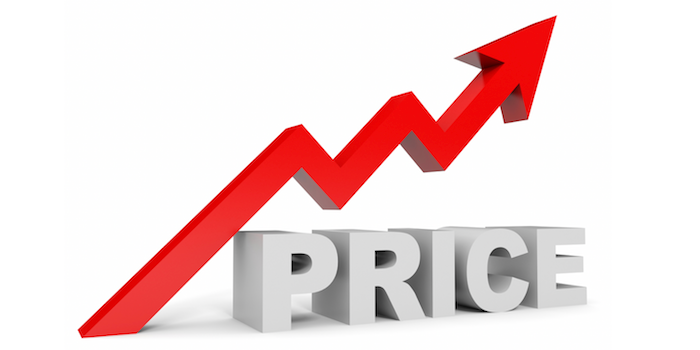Faced with mounting pressures, from rising material costs to supply chain logjams, flooring suppliers have confronted the landscape with inevitable price increases. Retailers, in turn, will have no choice but to pass along these increases to consumers.
Note: This post is forwarded from Floorcovering weekly. Original Editor is Sharyn Bernard, written on 14th,Sep,2021. Here is the link:
https://www.floorcoveringweekly.com/main/features/price-increases-loom-large-35537
In the last month, several manufacturers have announced price increases, ranging from 2 percent to 10 percent, depending on the product. According to statements, global factors left them with no choice.
Interface announced it will permanently increase its U.S. market prices 5 percent to 7 percent for carpet tile and 10 percent for adhesives. “Because of the extreme rise in shipping container costs, the company is also adding a temporary 25 cent surcharge per square foot to all LVT orders and a 10 cent per square foot surcharge to all nora rubber product orders. The shipping surcharge will be reduced or discontinued when freight costs moderate,” the company said in a statement. And Milliken announced a 2 percent to 4 percent increase for its commercial soft flooring and 5 percent to 10 percent increase for resilient flooring, pointing to the rising costs of raw materials for necessitating the hike.
No one likes increases, but they are usually necessary. “We understand price increases are a very real pain point for our customers and Shaw has been intentional about communicating the ‘why’ behind any increase or surcharge we’ve implemented,” said Scott Sandlin, executive vice president of residential business. He pointed to raw material inflation, labor shortages, increased demands, global supply chain constraints, and freight pressures as the main culprits for increases.
“Ongoing international, ocean and domestic freight inflation, coupled with container shortages, have significantly impacted service timelines on hard surfaces. We are aggressively procuring material by paying more for spot market container rates and we have even chartered ships to bolster our resilient inventory,” he said. The company implemented a hard surface freight surcharge to help offset the price. “Instituting a traditional price increase would not be reflective of the current challenges the market is facing.” He noted a variable surcharge allows the company to adjust rates up or down accordingly. “While [we] cannot predict exactly how or for how long things will transpire, we can promise our customers timely and transparent communication about ever-shifting market dynamics.”
The market dynamics that are causing these increases aren’t likely to subside anytime soon. “The macro economic environment continues to be dynamic and it looks like that could continue through 2021 and 2022,” said Brent Flaharty, senior vice president and chief customer experience officer for Armstrong Flooring. He agreed that while inflation, shipping and container issues are putting pressure on prices, that’s only one part of the issue. “Demand is strong, and our domestic manufacturing footprint is providing our customers with options to satisfy orders.” The company is communicating with its customers proactively and “working with our partners to navigate job quotes and other unique situations that have arisen like the need to substitute products where delays are occurring,” he said.
Retailers are dealing with price increases on an almost day-to-day basis. “We have always welcomed price increases as it increases gross profit dollars,” said Sam O’Krent, owner of O’Krent floors. “These last 18 months though have been like drinking through a fire hose. Since we mark every sample on our floor with a retail price, it has been incredibly difficult to keep up with the constant increases and are looking forward to prices stabilizing soon, hopefully.”
Deb DeGraaf, co-owner of DeGraaf Interiors, said it is a daily struggle for her team to keep track of all the increases. “Before we have time to adjust for some of them, we are hearing of another one coming.”
The increases have given sales associates a talking point. “The increases have had no impact on our ability to sell,” O’Krent said. “They have helped our RSAs create a sense of urgency for the consumer to buy now, before we get our next price increase.”
Added Larry Flick, chief executive officer for The Floor Store, “Price increases have not affected our closing ratios or traffic, to my surprise, and we have used them as a closing tool. If you don’t buy today, prices are going up.”
Retailers said communication by their suppliers is key. “Fortunately, most of our vendors can share pricing with us B2B which is a great asset in our ability to price the floor quicker,” O’Krent said. “We even have some vendor reps who have jumped in and helped us place the new tags on their products.”
“Our local reps are doing a nice job reminding us of the deadlines for ordering and we try to take advantage of the short-lived costs. I know in some areas our margins have taken a hit because most of the suppliers are very late in updating their B2B downloads so we have to make the best educated guess on where the costs are going to be,” said DeGraaf.
Flick added, “Our primary vendors and partners do a great job helping us reprice our floors.”

